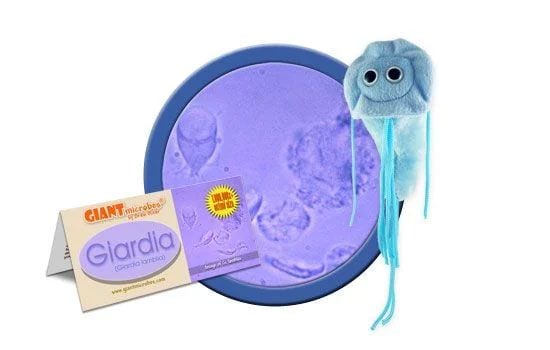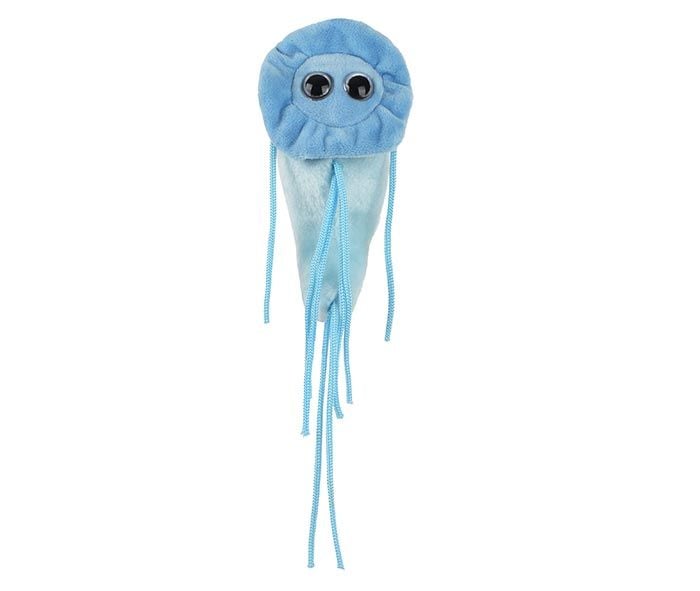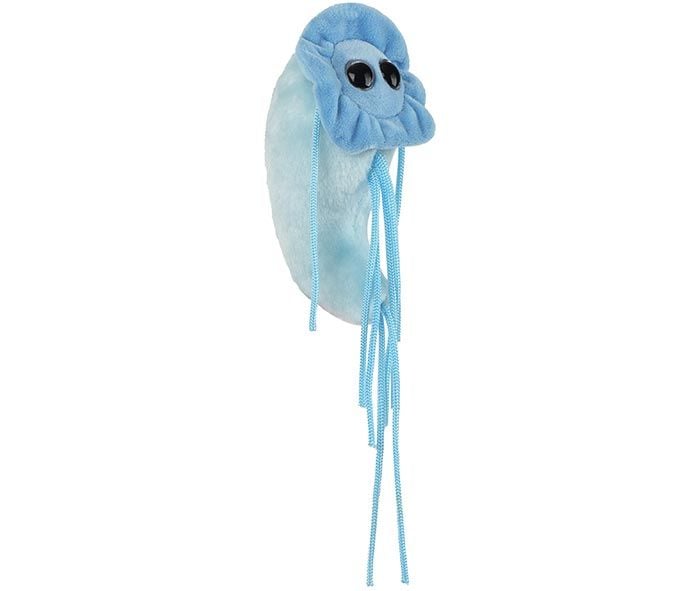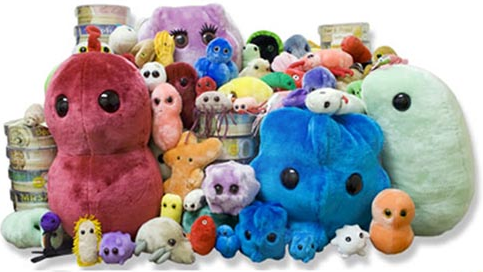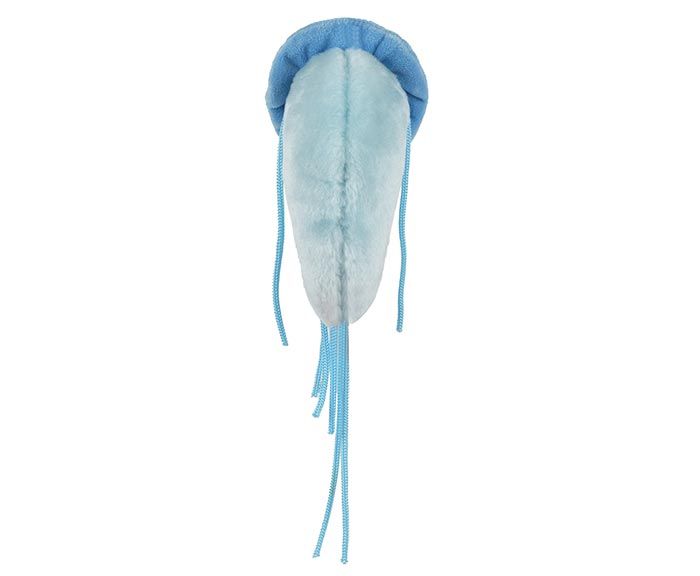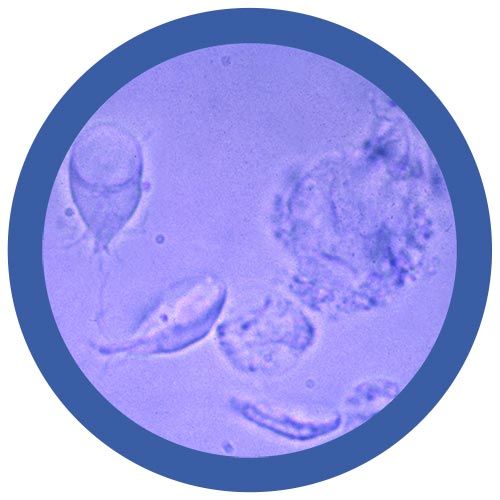Giardia (Giardia lamblia)
Product Details
Additional Information
| Sizes | Giantmicrobes are based on actual microbes, cells, organisms and other critters, only 1,000,000 times actual size! Gigantic (GG) 40-60cm XL (XL) 25-38cm Original (PD) 12-20cm Minis (MM) 5-10cm each Keychain (KC) 5-10cm with clip |
|---|---|
| Materials | Plush from all new materials. Stuffed with polyester fiber fill. Surface washable: sponge with water & soap, air dry. |
| Packaging | Each plush microbe includes a printed card with fun, educational and fascinating facts about the actual microbe or cell. |
| Safety | Every product meets or exceeds U.S. and European standards for safety. For ages 3 and up. |
All about Giardia (Giardia lamblia)
FACTS: Giardia lamblia is a protozoan parasite often acquired during recreational swimming in the lakes and rivers of the great outdoors. Hikers and campers are common carriers and giardiasis (or giardia infection) is sometimes referred to as “hiker’s diarrhea.” Giardia is found in artificial swimming pools and hot tubs, not to mention contaminated drinking water and food. In fact, some estimates suggest that giardia infects up to 20% of the world’s population!
A hard outer shell allows giardia to survive in the wide world, but it is most at home in the great indoors of the human and animal intestine. Nevertheless, as victims of circumstance, giardia parasites can find themselves expelled from the intestinal paradise by the usual route. Water runoff then carries them to nearby lakes and streams.
(Children’s diapers are a common pathway from intestines to swimming pools and hot tubs – as well as to countertops in daycare centers, for example, where outbreaks occasionally occur.) Symptoms typically last for about a month and include severe stomach cramps and diarrhea, though in some instances (often where it is endemic) giardiasis produces no symptoms at all.
The best way to avoid giardia is to avoid swimming in or ingesting contaminated water; to wash hands thoroughly before eating or after handling diapers or other waste; and to boil, filter, or chemically treat drinking water where its quality is unknown. So take precautions – or you may end up listening to the call of nature.
| Description | The parasite lives in water and feces. People get Giardiasis when the parasite enters the mouth through tainted water or food, or contact with infected people. Cool gift for a medical professional. |
|---|
| Name | The species name, lamblia, was given after the scientist Vilem Lambl. |
|---|
| Symptoms | Diarrhea, stomach discomfort, and dehydration. |
|---|
| Cure | Many people get better in weeks without drugs. Antibiotics like metronidazole are used to treat the infection. |
|---|
| History |
1681: Antony van Leeuwenhoek was the first to observe Giardia. 1859: Vilem Lambl studied Giardia in children’s diarrhea. Big Outbreaks: 1986: >700 cases in Massachusetts from contaminated reservoir. 2003: >100 people in Massachusetts infected from family club. Recent Outbreaks: 2013: Outbreak near Niagara Falls. |
|---|
| Fascinating Facts |
Nicknamed “Beaver Fever” because of campers who drank Giardia infected water. Globally, it is one of the top intestinal parasites. Children are more likely to get it than adults. |
|---|


